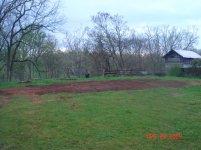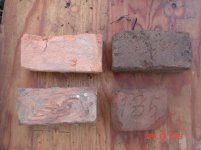OP
stoneyfork
Member
Some real nice timbers in there. I'll take some close ups of the brick this weekend. Someone told me that a lot of them appear to be "sun dried" as opposed to kiln dried. The bricks on the outside of the chimney look as though they are much harder and more uniform than the brick from the inside of the chimney.


